5 Tricks to Get Rid of Weeds on Your Patio
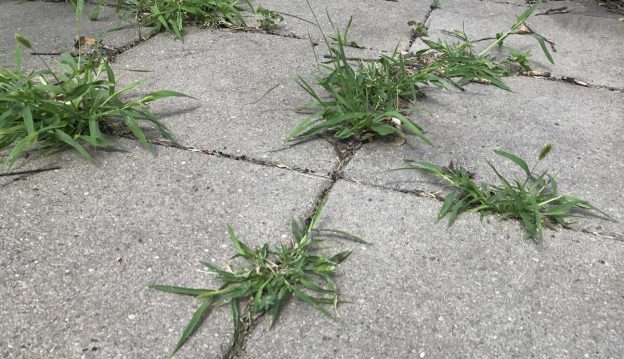
When installing or refreshing a patio, weed growth is something to think about. Getting rid of weeds on your patio can seem like a pain because they are experts at finding places to grow.
But don’t worry, you’re not defenseless against weeds and other invasive plants.
While the best way to get rid of weeds is to prevent them from growing in the first place, there are several ways to remove those that have already started to grow on your patio.
How to Get Rid of Weeds on a Patio
Weeds can grow in even the smallest cracks in a patio if you don’t take precautions to prevent them. When you properly install pavers, weeds have a difficult time growing up through the spaces between them.
But there may be times when the and between the joints may come loose, letting weeds take hold. Other materials, like concrete, gravel, and wood can also crack or shift over time, allowing weed growth as well.
Regularly sweeping and maintaining your patio will prevent seeds from settling between the pavers or into cracks as well.
Whether you’re putting down a new patio or refreshing an old one, there’s a ton of ways to deal with weeds growing between them. Once you’ve already got a weed problem, it can be difficult to take care of, but there are several ways to resolve the problem in the beginning.
Let’s look at a couple of ways to prevent and get rid of weeds on a patio.
Method #1: Baking Soda
Simple household baking soda may be all you need for your weed problems, especially if you want to kill weeds growing near decorative plants you’d like to keep. Baking soda is a natural product that will not contaminate your property or landscaping and is safe for the environment.
Baking soda, or sodium bicarbonate, works by overloading the weed with salt, causing it to dry out all the way to the roots and die.
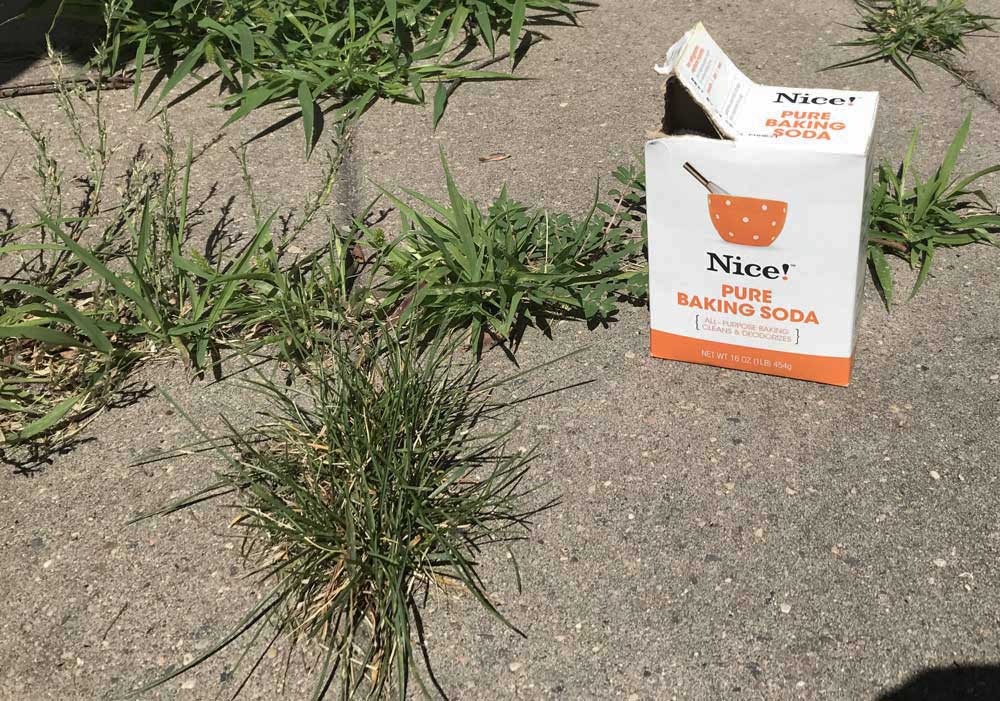
To get rid of weeds with baking soda, moisten them with your garden hose and then sprinkle the soda on top of the entire weed.
If you have a paver patio or a concrete patio that has cracked, prevent weeds from growing by pouring baking soda over the surface and sweeping it into the cracks. Re-apply every four to six weeks for the best results. This method works the fastest during spring and fall but can still work during summer.
Method #2: Vinegar
Vinegar, like baking soda, is a natural household product that is safe to use as a weed killer. Vinegar has acetic acid, which draws the moisture out of plants causing them to die. Vinegar is extremely fast-acting and will result in brown, withered weeds within 24 hours.
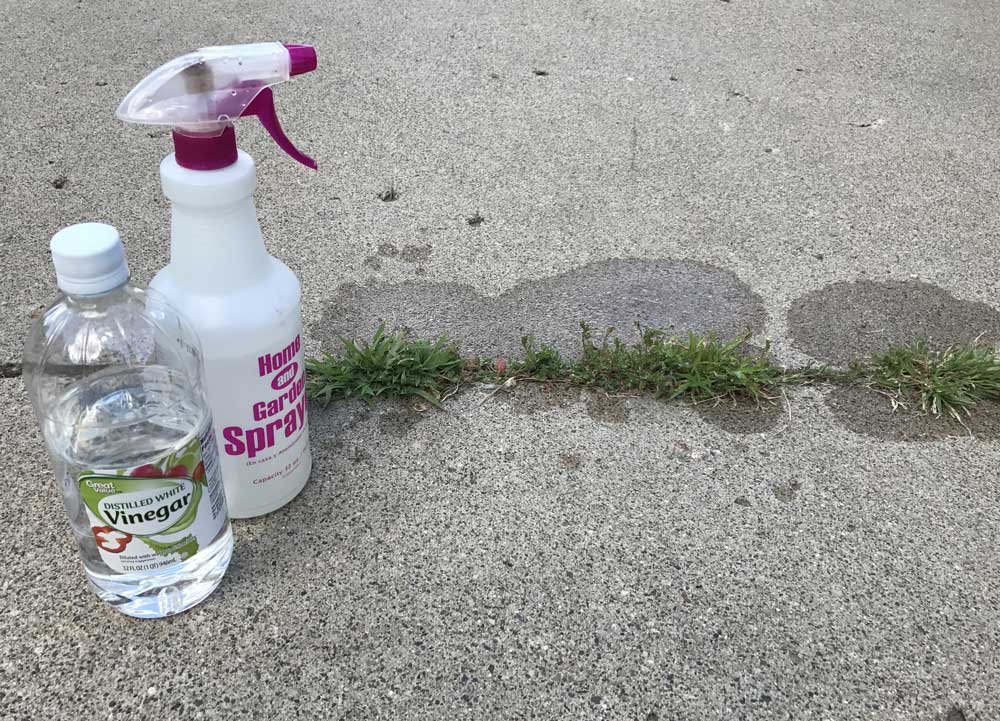
Because vinegar is harmful to all plants, apply it using a spray bottle. Be sure to control any overspray so the vinegar does not impact nearby plants.
For longer-lasting results, mix 1 gallon of white vinegar, 2 cups of table salt, and 1 tsp of concentrated dish soap and spray on all the weeds and cracks in the patio.
The high concentration of salt in this formula prevents them from growing back.
Method #3: Salt
Salt is another natural product that you can use to kill weeds. Start by using a 3:1 mixture of water and salt and apply to the area very carefully. Keep in mind that saltwater will also kill other plants, so take care to apply it only to the weeds.
The salt mixture can also be applied to cracks to help prevent future weed growth as well. Like the baking soda and vinegar methods, this is effective since salt dries out the plants to the roots and has a lasting effect.
Method #4: Pressure Washing
For a low-cost solution, you can pull the weeds by hand and then pressure wash the pavers to get rid of roots. For this method to be effective, you should always pull the largest weeds by hand because they’re difficult to remove with a pressure washer.
Once the larger weeds are removed, pressure wash around the stones.
The goal is to remove debris and sand from the joints while not disturbing the bedding layer that the pavers are resting on. You’ll need to continue to do this regularly to keep the weeds at bay.
Keep in mind that if you have pavers, you should apply polymeric or dry sweeping sand between the joints. The sand helps prevent future weed growth. If the sand has come loose over time, pressure wash first, then apply new sand.
Make sure you test the pressure washer in an inconspicuous area first, before washing the entire patio. Some materials can be harmed by the pressure washer, while others may change color if their patina is removed.
Method #5: Chemical Treatments
You can use chemical herbicides to treat weeds on patios as well, and there are two general types: pre-emergent and post-emergent. Pre-emergent herbicides work on plant seeds and seedlings, and they form a barrier to prevent germination.
Post-emergent herbicides work on actively growing weeds and are divided into two categories: selective and non-selective.
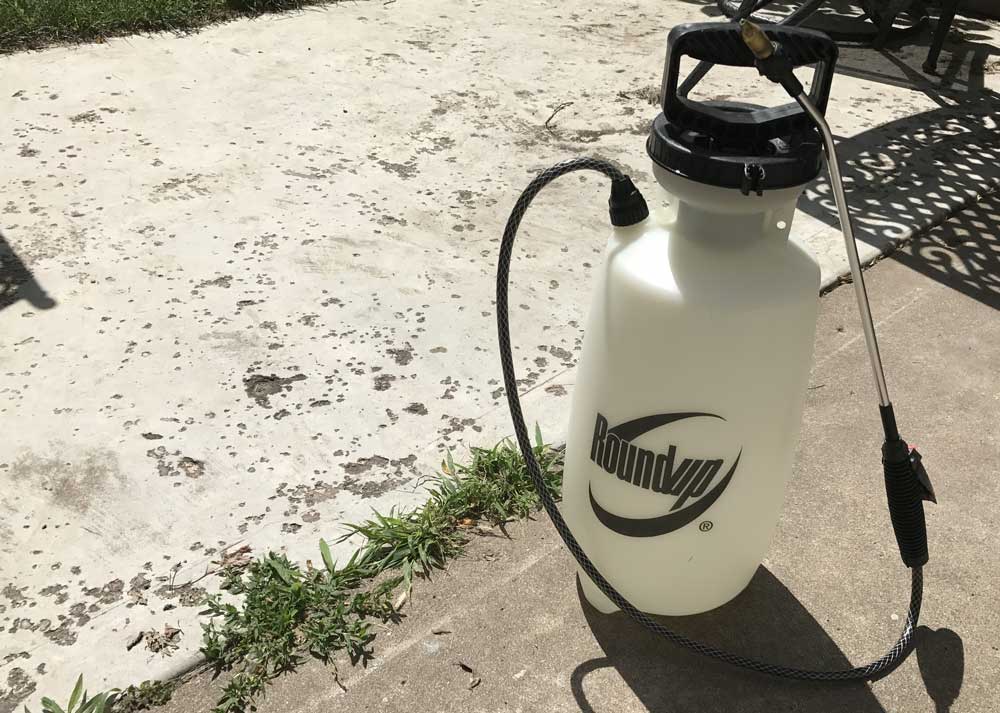
Selective herbicides can be applied to your whole patio because they target just weeds while having little to no effect on the surrounding grass. Non-selective herbicides will kill every type of plant that they touch, so you should only use them in the middle of your patio, or try and apply to or target only the weeds.
Preventing Weeds From Growing on a Paver Patio
There are several ways to prevent weeds from growing on your patio again. Baking soda, vinegar, and herbicides can all be used to prevent them from growing back.
Once these materials leech into the soil, weeds will have a difficult time growing. These methods need to be re-applied often to work effectively.
Polymeric Sand
You can also use polymeric sand to fill the joints between pavers to lock the joint together and prevent weed growth. Polymeric sand is not ordinary sand, it is a super-fine sand with polymer additives that form a binding agent when mixed with water to better seal cracks between pavers.
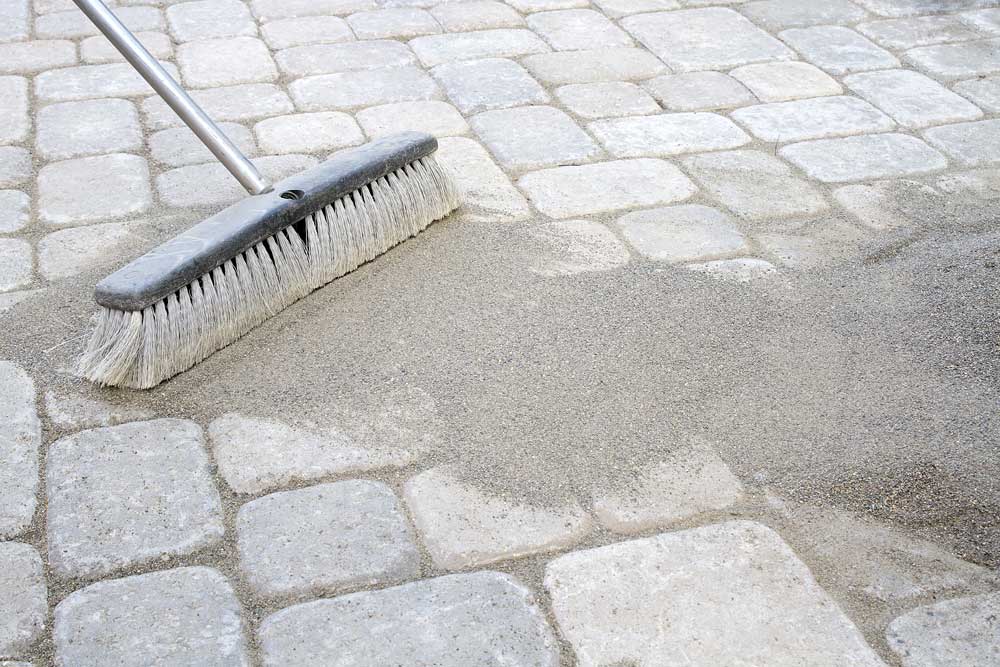
Polymeric sand also improves the durability of your patio, locking pavers together so that weeds can’t find a place to grow. Because it’s bonded to itself and the pavers, polymeric sand resists erosion, protecting not only the pavers but also the base materials.
Calculate how much polymeric sand you need to prevent weeds on your patio.
While it’s hard to get rid of weeds on a patio once they’ve started to grow, you can set yourself up for success when you first install your pavers.
You can prevent them from even getting a foothold in your patio by using polymeric sand on pavers, natural products, or a chemical solution. Be proactive and make your patio weed-free from day one!


